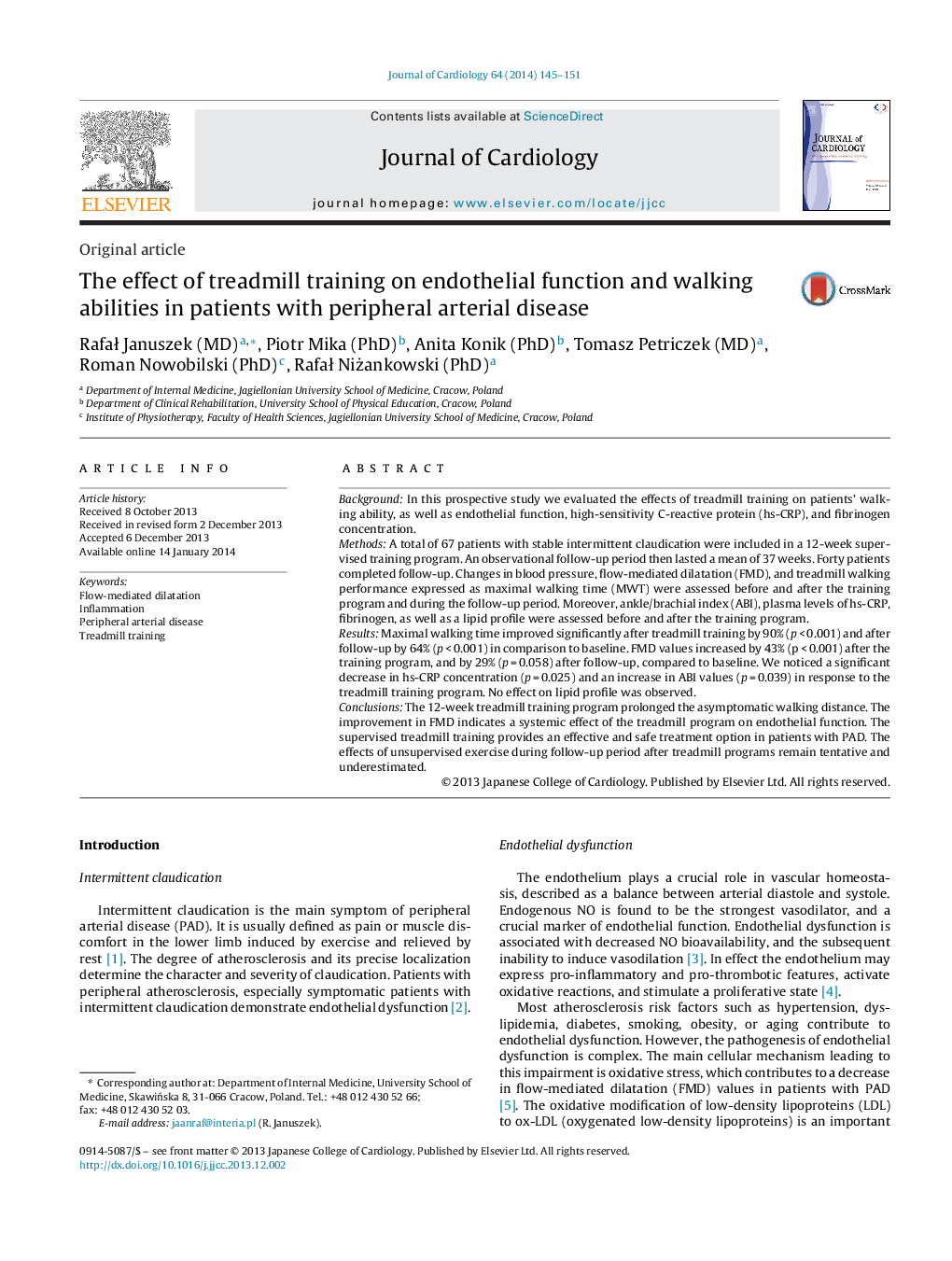| Article ID | Journal | Published Year | Pages | File Type |
|---|---|---|---|---|
| 2962965 | Journal of Cardiology | 2014 | 7 Pages |
BackgroundIn this prospective study we evaluated the effects of treadmill training on patients’ walking ability, as well as endothelial function, high-sensitivity C-reactive protein (hs-CRP), and fibrinogen concentration.MethodsA total of 67 patients with stable intermittent claudication were included in a 12-week supervised training program. An observational follow-up period then lasted a mean of 37 weeks. Forty patients completed follow-up. Changes in blood pressure, flow-mediated dilatation (FMD), and treadmill walking performance expressed as maximal walking time (MWT) were assessed before and after the training program and during the follow-up period. Moreover, ankle/brachial index (ABI), plasma levels of hs-CRP, fibrinogen, as well as a lipid profile were assessed before and after the training program.ResultsMaximal walking time improved significantly after treadmill training by 90% (p < 0.001) and after follow-up by 64% (p < 0.001) in comparison to baseline. FMD values increased by 43% (p < 0.001) after the training program, and by 29% (p = 0.058) after follow-up, compared to baseline. We noticed a significant decrease in hs-CRP concentration (p = 0.025) and an increase in ABI values (p = 0.039) in response to the treadmill training program. No effect on lipid profile was observed.ConclusionsThe 12-week treadmill training program prolonged the asymptomatic walking distance. The improvement in FMD indicates a systemic effect of the treadmill program on endothelial function. The supervised treadmill training provides an effective and safe treatment option in patients with PAD. The effects of unsupervised exercise during follow-up period after treadmill programs remain tentative and underestimated.
